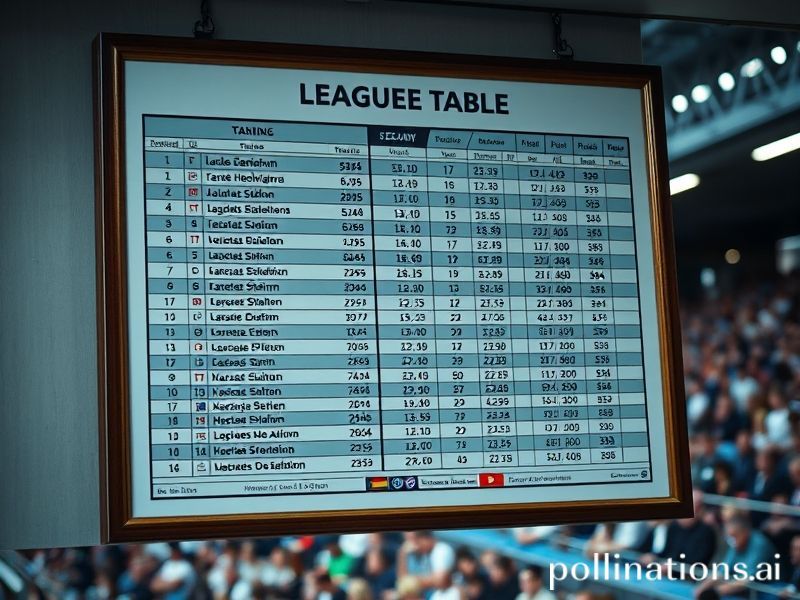The Great Global Ranking Game: Why League Tables Are Having a Moment
# The Great Global Ranking Game: Why League Tables Are Having a Moment
In a world where we’re constantly comparing notes, grades, and followers, it’s no surprise that league tables are having a moment. From universities to hospitals, countries to companies, we’re obsessed with ranking everything and anything. But why are these lists suddenly trending globally, and what does our collective fascination say about us?
## The Power of the List
First, let’s acknowledge the humble list’s power. Lists are everywhere—in our shopping, our to-do’s, even our dating lives (swipe right, anyone?). They’re satisfying, easy to digest, and, let’s face it, addictive. League tables are just lists on steroids, adding a dash of competition and a sprinkle of judgment.
## The Cultural Context
Our love for league tables isn’t new. Remember the “Coolest Celebrities” lists in teen magazines or the “Best Schools” rankings in local newspapers? But today’s league tables are different. They’re global, digital, and data-driven. They’re also increasingly influential, shaping decisions about where to study, work, or even vacation.
Take the QS World University Rankings, for instance. These tables don’t just rank institutions; they can influence policy, funding, and even a country’s global standing. Similarly, the World Happiness Report or the Global Peace Index don’t just rank nations; they shape perceptions and, arguably, behaviors.
## The Social Impact
League tables can drive improvement. The pressure to rank higher can spur innovation, better services, or more effective policies. But they also have a dark side. They can foster unhealthy competition, encourage gaming the system, and even distort priorities. Remember when some universities were caught manipulating data to climb the rankings?
Moreover, league tables can oversimplify complex issues. Reducing a university, a country, or a hospital to a single number ignores the nuances and complexities of real life. They can also create a false sense of superiority or inferiority, fueling nationalism or institutional pride (or envy).
## Why Now?
So, why are league tables trending now? For one, data is everywhere. We’re living in the age of big data, where everything can be measured, quantified, and ranked. Plus, the internet and social media have made these rankings more accessible and shareable than ever.
There’s also a psychological factor. In uncertain times, people crave clarity and order. League tables provide a sense of control, a way to make sense of a chaotic world. They offer a clear, quantifiable way to compare and contrast, to know where we stand.
## The Significance
Our fascination with league tables is significant because it reflects our collective values and anxieties. It shows our desire for transparency and accountability, but also our tendency towards simplification and judgment. It highlights our competitive spirit, but also our vulnerability to manipulation and distortion.
Moreover, as league tables gain influence, they shape not just individual choices but also societal priorities and policies. They can drive progress, but they can also distract or mislead. Understanding their power and limitations is crucial.
## The Bottom Line
League tables are here to stay. They’re a product of our data-driven world and our competitive nature. But as we engage with them, let’s remember to question, to dig deeper, and to consider the bigger picture. After all, life’s too complex to be reduced to a single number.
So, next time you see a league table, ask yourself: What’s being measured, and what’s being left out? Who’s benefiting, and who’s being left behind? And most importantly, does this ranking really matter, or is it just another list to scroll past?
—







